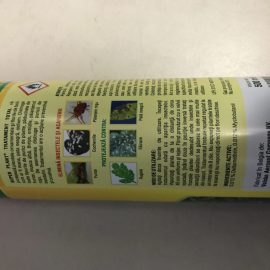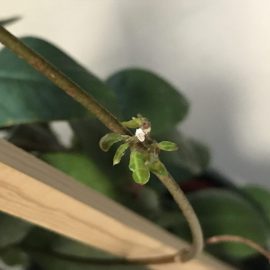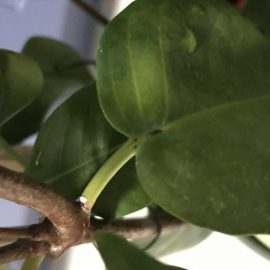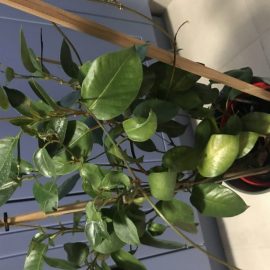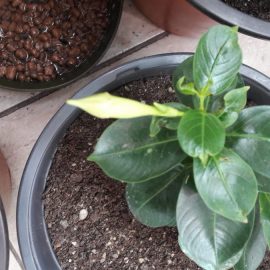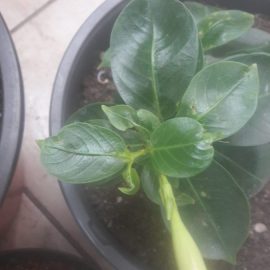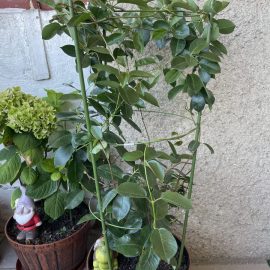Dipladenia, plant care and growing guide
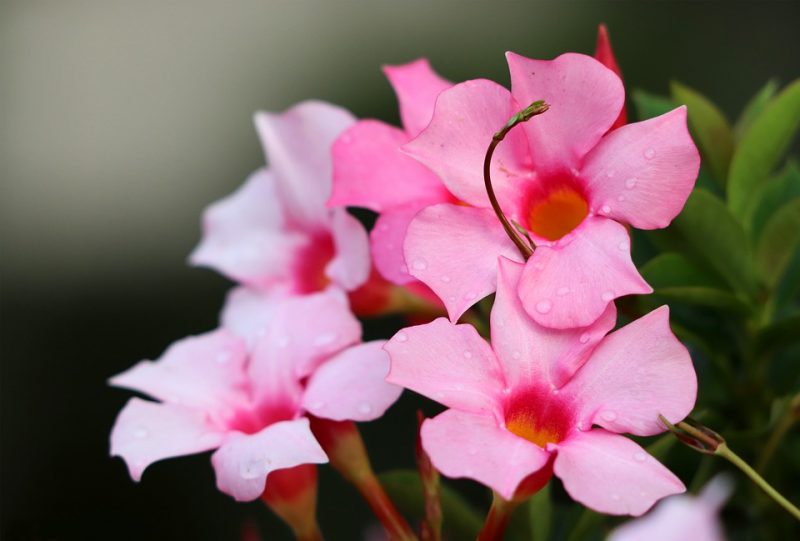
Dipladenia or Mandevilla is a genus of climbing, flowering plants, native to tropical and subtropical areas of America. It is often used as an indoor decorative plant, it can grow up to 3 m in height if it is not cut, but it has a low lifespan. It can live up to 5 years if it has optimal environmental conditions. The most common species is Dipladenia sanderi. It has rich foliage, with oval, elliptical leaves, with a glossy surface. The flowers appear in summer in the form of bundles, have the shape of a trumpet, and are brightly colored in pink, red, or white.
Species and varieties
Dipladenia atropurpurea – it has dark purple flowers, which grow on plants older than 5 years.
Dipladenia boliviensis – it has fragrant flowers, which are small and white.
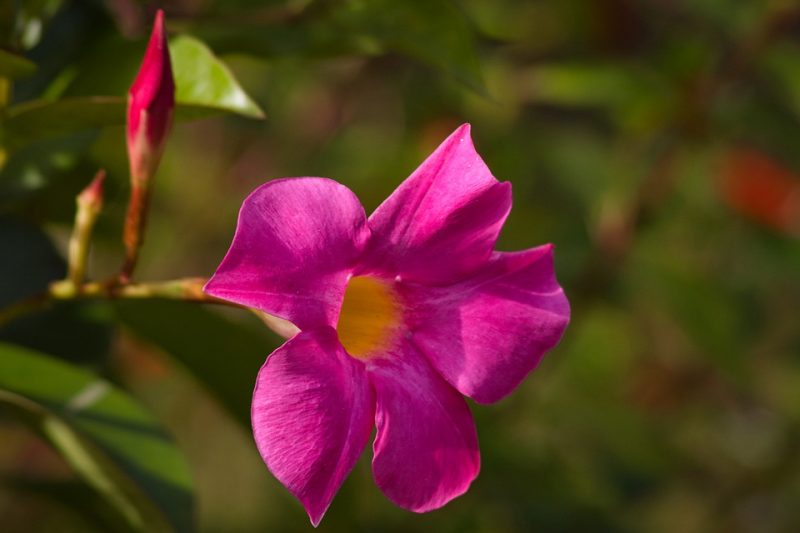
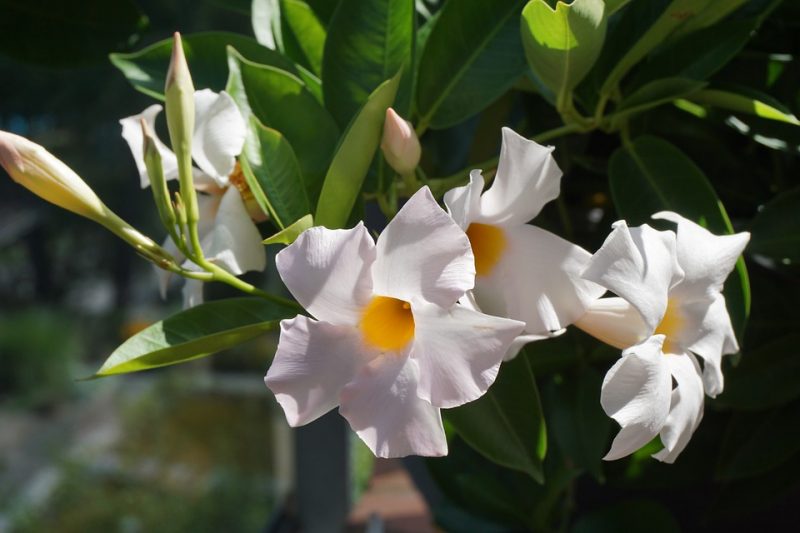
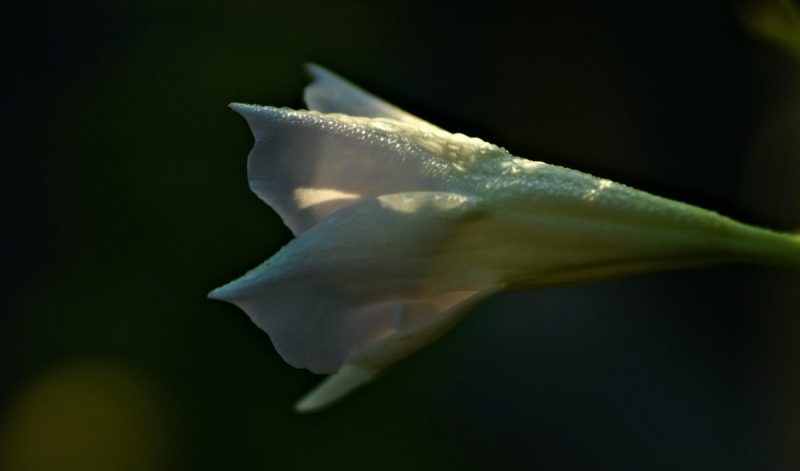
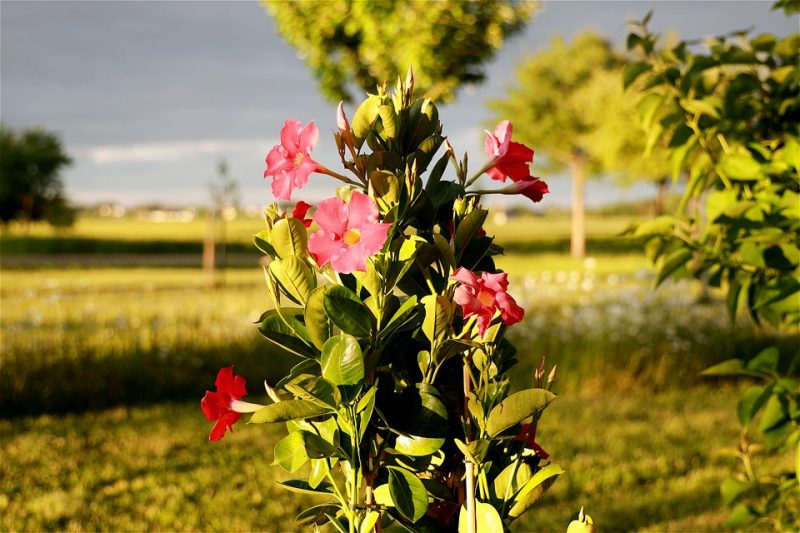
Care
Light. It prefers places with bright light, but it should not be placed in direct sunlight.
Temperature. Dipladenia is a species with high demands in terms of temperature, the optimum range being 20-22° C. In winter, the room temperature should not drop below 12° C.
Humidity. Spray the foliage daily with soft water or place the pot on a bed of damp gravel to ensure a humidity of 60-70%.
Substrate. The substrate must be light and allow good drainage.
Recommended products
-
You can find products on a different store
Change Store -
You can find products on a different store
Change Store -
You can find products on a different store
Change Store -
You can find products on a different store
Change Store -
You can find products on a different store
Change Store -
You can find products on a different store
Change Store -
You can find products on a different store
Change Store -
You can find products on a different store
Change Store -
You can find products on a different store
Change Store -
You can find products on a different store
Change Store -
You can find products on a different store
Change Store -
You can find products on a different store
Change Store -
You can find products on a different store
Change Store -
You can find products on a different store
Change Store -
You can find products on a different store
Change Store -
You can find products on a different store
Change Store -
You can find products on a different store
Change Store -
You can find products on a different store
Change Store -
You can find products on a different store
Change Store -
You can find products on a different store
Change Store -
You can find products on a different store
Change Store -
You can find products on a different store
Change Store -
You can find products on a different store
Change Store -
You can find products on a different store
Change Store
Watering. Humidity in the substrate must be moderate. Water should be added only when the substrate is dry on the surface. In winter, it should be watered less often, leaving the substrate to dry almost completely, but this depends on the temperature inside the room.
Fertilization. During the vegetative growth period, a fertilizer for flowering plants should be administered. Winter fertilization is not recommended.
Recommended products
-
You can find products on a different store
Change Store -
You can find products on a different store
Change Store -
You can find products on a different store
Change Store -
You can find products on a different store
Change Store -
You can find products on a different store
Change Store -
You can find products on a different store
Change Store -
You can find products on a different store
Change Store -
You can find products on a different store
Change Store -
You can find products on a different store
Change Store -
You can find products on a different store
Change Store -
You can find products on a different store
Change Store -
You can find products on a different store
Change Store -
You can find products on a different store
Change Store -
You can find products on a different store
Change Store -
You can find products on a different store
Change Store -
You can find products on a different store
Change Store -
You can find products on a different store
Change Store -
You can find products on a different store
Change Store -
You can find products on a different store
Change Store -
You can find products on a different store
Change Store -
You can find products on a different store
Change Store -
You can find products on a different store
Change Store -
You can find products on a different store
Change Store -
You can find products on a different store
Change Store
Repotting. It must be transplanted annually, in spring, before entering the vegetative period.
Pruning. You can make cuts to maintain the shape and size of the plant, annually, after the flowers fall.
Recommended products
-
You can find products on a different store
Change Store -
You can find products on a different store
Change Store -
You can find products on a different store
Change Store -
You can find products on a different store
Change Store -
You can find products on a different store
Change Store -
You can find products on a different store
Change Store -
You can find products on a different store
Change Store -
You can find products on a different store
Change Store -
You can find products on a different store
Change Store -
You can find products on a different store
Change Store -
You can find products on a different store
Change Store -
You can find products on a different store
Change Store -
You can find products on a different store
Change Store -
You can find products on a different store
Change Store -
You can find products on a different store
Change Store -
You can find products on a different store
Change Store -
You can find products on a different store
Change Store -
You can find products on a different store
Change Store -
You can find products on a different store
Change Store -
You can find products on a different store
Change Store -
You can find products on a different store
Change Store -
You can find products on a different store
Change Store -
You can find products on a different store
Change Store -
You can find products on a different store
Change Store
Propagation
Dipladenia can be propagated through cuttings in spring. Cut 15 cm long cuttings from the stem and root them in a substrate made of peat, perlite, and sand. During the day, the temperature must be maintained at 25° C, while at night it can drop to 16° C. It is recommended to use rooting stimulants and keep the substrate permanently damp. Transplanting the cuttings into another pot should be done 3 weeks after the roots have formed.
Recommended products
-
You can find products on a different store
Change Store -
You can find products on a different store
Change Store -
You can find products on a different store
Change Store -
You can find products on a different store
Change Store -
You can find products on a different store
Change Store -
You can find products on a different store
Change Store -
You can find products on a different store
Change Store -
You can find products on a different store
Change Store -
You can find products on a different store
Change Store -
You can find products on a different store
Change Store -
You can find products on a different store
Change Store -
You can find products on a different store
Change Store -
You can find products on a different store
Change Store -
You can find products on a different store
Change Store -
You can find products on a different store
Change Store -
You can find products on a different store
Change Store -
You can find products on a different store
Change Store -
You can find products on a different store
Change Store -
You can find products on a different store
Change Store -
You can find products on a different store
Change Store -
You can find products on a different store
Change Store -
You can find products on a different store
Change Store -
You can find products on a different store
Change Store -
You can find products on a different store
Change Store
Pests and diseases. Aphids can infest the plant and their presence is often signaled on the underside of the leaves. Treatments with specific insecticides must be applied.
Recommended products
-
You can find products on a different store
Change Store -
You can find products on a different store
Change Store -
You can find products on a different store
Change Store -
You can find products on a different store
Change Store -
You can find products on a different store
Change Store -
You can find products on a different store
Change Store -
You can find products on a different store
Change Store -
You can find products on a different store
Change Store -
You can find products on a different store
Change Store -
You can find products on a different store
Change Store -
You can find products on a different store
Change Store -
You can find products on a different store
Change Store -
You can find products on a different store
Change Store -
You can find products on a different store
Change Store -
You can find products on a different store
Change Store -
You can find products on a different store
Change Store -
You can find products on a different store
Change Store -
You can find products on a different store
Change Store -
You can find products on a different store
Change Store -
You can find products on a different store
Change Store -
You can find products on a different store
Change Store -
You can find products on a different store
Change Store -
You can find products on a different store
Change Store -
You can find products on a different store
Change Store
In addition:
- the pot can be taken outside in summer, when temperatures are constant.
- sometimes the leaves may fall during winter, but new ones will appear in spring.
- the sap of the plant can be toxic to humans, so it must be handled with gloves.














































































































































































































































































































































































































































